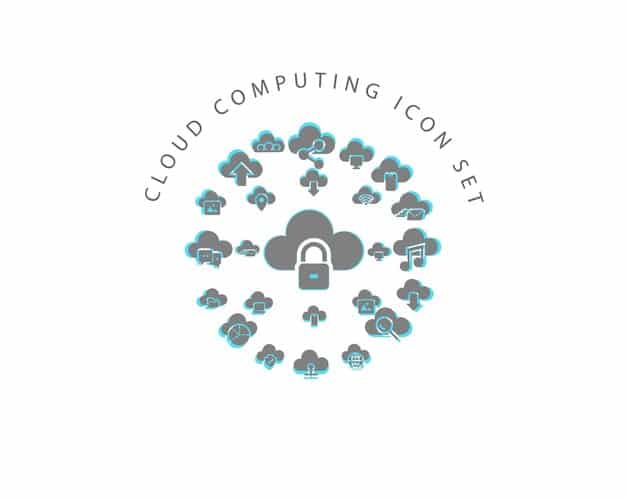Streamlining Operations: Cloud Solutions for US Businesses

Cloud-based solutions offer US businesses practical ways to streamline operations by improving efficiency, reducing costs, and enhancing collaboration through scalable and accessible technology.
In today’s fast-paced business landscape, efficiency and agility are key to success. US businesses are increasingly turning to cloud-based solutions to streamline their operations, reduce costs, and improve overall productivity. Explore practical strategies to leverage the cloud for enhanced performance.
Understanding the Shift to Cloud-Based Operations
The adoption of cloud-based solutions has transformed how businesses operate, offering numerous advantages over traditional on-premise systems. This shift allows for greater flexibility, scalability, and cost-effectiveness, making it a strategic move for US businesses looking to stay competitive.
Why Are Businesses Moving to the Cloud?
The cloud offers a range of compelling benefits that drive businesses to transition from traditional infrastructure. Key among these are reduced IT costs, improved data security, and enhanced collaboration capabilities.
- Cost Savings: Cloud solutions eliminate the need for expensive hardware and IT infrastructure, reducing capital expenditure and ongoing maintenance costs.
- Scalability: Businesses can easily scale their resources up or down based on demand, ensuring they only pay for what they use.
- Accessibility: Cloud-based applications and data can be accessed from anywhere with an internet connection, enabling remote work and enhanced collaboration.
By embracing cloud technology, businesses can focus on their core competencies, driving innovation and growth.

Key Cloud-Based Solutions for US Businesses
Several cloud-based solutions are particularly effective for streamlining business operations. These include Software-as-a-Service (SaaS), Infrastructure-as-a-Service (IaaS), and Platform-as-a-Service (PaaS), each offering unique benefits and applications.
SaaS: Revolutionizing Business Applications
Software-as-a-Service (SaaS) delivers applications over the internet, eliminating the need for local installation and maintenance. This model is ideal for businesses seeking easy-to-use, readily available software solutions.
- Customer Relationship Management (CRM): Cloud-based CRM systems like Salesforce and HubSpot help businesses manage customer interactions, improve sales processes, and enhance customer service.
- Enterprise Resource Planning (ERP): Cloud ERP solutions such as NetSuite and SAP Business One integrate various business functions, including finance, HR, and supply chain management, into a single platform.
- Collaboration Tools: Platforms like Microsoft Teams and Slack facilitate seamless communication and collaboration among team members, enhancing productivity and teamwork.
By leveraging SaaS solutions, businesses can streamline workflows, improve data visibility, and foster better decision-making.
Enhancing Productivity with Cloud-Based Collaboration Tools
Effective collaboration is crucial for business success. Cloud-based collaboration tools enable teams to work together seamlessly, regardless of location, fostering innovation and boosting productivity.
Cloud services facilitate real-time document collaboration, video conferencing, and project management, enhancing team dynamics and efficiency. These tools ensure that all team members have access to the latest information and can contribute effectively to projects.
Real-Time Collaboration and Communication
Tools like Google Workspace and Microsoft 365 offer real-time document collaboration, allowing multiple users to work on the same file simultaneously. This reduces version control issues and streamlines the editing process.
Cloud-based communication platforms such as Zoom and Microsoft Teams provide video conferencing, instant messaging, and file sharing capabilities, enabling teams to stay connected and productive, even when working remotely.
Optimizing Data Management and Security in the Cloud
Data is a critical asset for businesses, and cloud solutions offer robust data management and security capabilities. Cloud providers invest heavily in security infrastructure and protocols to protect data from cyber threats and ensure compliance with industry regulations.

Cloud providers offer features such as data encryption, multi-factor authentication, and regular security audits to safeguard data and maintain business continuity. These measures ensure that businesses can trust the cloud with their sensitive information.
Data Backup and Disaster Recovery
Cloud-based backup and disaster recovery solutions provide automated data backups and rapid recovery capabilities, minimizing downtime in the event of a system failure or natural disaster. Services like AWS Backup and Azure Backup offer reliable and cost-effective data protection.
These solutions ensure that businesses can quickly restore their data and applications, minimizing disruption to their operations and maintaining business resilience.
Cost-Effective Cloud Strategies for US Businesses
Implementing cloud-based solutions can significantly reduce IT costs for US businesses. By eliminating the need for on-premise infrastructure and reducing IT maintenance overhead, businesses can allocate resources to more strategic initiatives.
Analyzing Cloud Spending and ROI
To maximize the cost benefits of the cloud, businesses should regularly analyze their cloud spending and Return on Investment (ROI). This involves tracking cloud usage, identifying areas for optimization, and ensuring that cloud resources are aligned with business objectives.
- Right-Sizing Resources: Adjust cloud resources to match actual demand, avoiding over-provisioning and unnecessary costs.
- Optimizing Storage: Use tiered storage options to store data based on access frequency, reducing storage costs for infrequently accessed data.
- Automating Tasks: Automate routine tasks and processes to reduce manual effort and improve efficiency.
By implementing these strategies, businesses can achieve significant cost savings and improve the overall efficiency of their cloud operations.
Future Trends in Cloud Computing for Business Operations
The field of cloud computing is constantly evolving, with emerging trends poised to further transform business operations. Staying informed about these trends is crucial for businesses looking to leverage the cloud for competitive advantage.
Edge Computing and the Internet of Things (IoT)
Edge computing brings data processing closer to the source, reducing latency and improving the performance of IoT applications. This is particularly relevant for industries such as manufacturing, healthcare, and transportation.
Cloud-based IoT platforms such as AWS IoT and Azure IoT Hub enable businesses to collect, process, and analyze data from IoT devices, providing valuable insights and enabling new business models.
In summary, cloud-based solutions are essential for businesses looking to streamline their operations, reduce costs, and enhance their competitive edge.
| Key Point | Brief Description |
|---|---|
| 💡 Cloud Adoption | Transitioning to the cloud offers flexibility and cost-effectiveness. |
| 🔒 Data Security | Cloud providers offer robust security for sensitive business data. |
| 🤝 Collaboration Tools | Enhance team productivity with cloud-based collaboration platforms. |
| 💰 Cost Savings | Reduce IT costs by eliminating the need for on-premise infrastructure. |
Frequently Asked Questions
▼
Cloud-based solutions offer cost savings, scalability, enhanced security, and improved collaboration, enabling businesses to operate more efficiently and effectively.
▼
Cloud providers invest heavily in security infrastructure, offering data encryption, multi-factor authentication, and regular security audits to protect your business data.
▼
Various cloud collaboration tools like Google Workspace, Microsoft Teams, and Slack facilitate real-time communication, document sharing, and project management for teams.
▼
Optimize cloud spending by right-sizing resources, using tiered storage options, and automating tasks to reduce unnecessary costs and improve efficiency.
▼
Keep an eye on edge computing and IoT, as these trends are set to revolutionize data processing and enable new business models in various industries.
Conclusion
In conclusion, adopting cloud-based solutions provides US businesses with invaluable practical solutions for streamlining operations, enhancing productivity, and achieving cost-effectiveness. Staying informed about emerging trends and optimizing cloud strategies will further empower businesses to thrive in the digital age.





